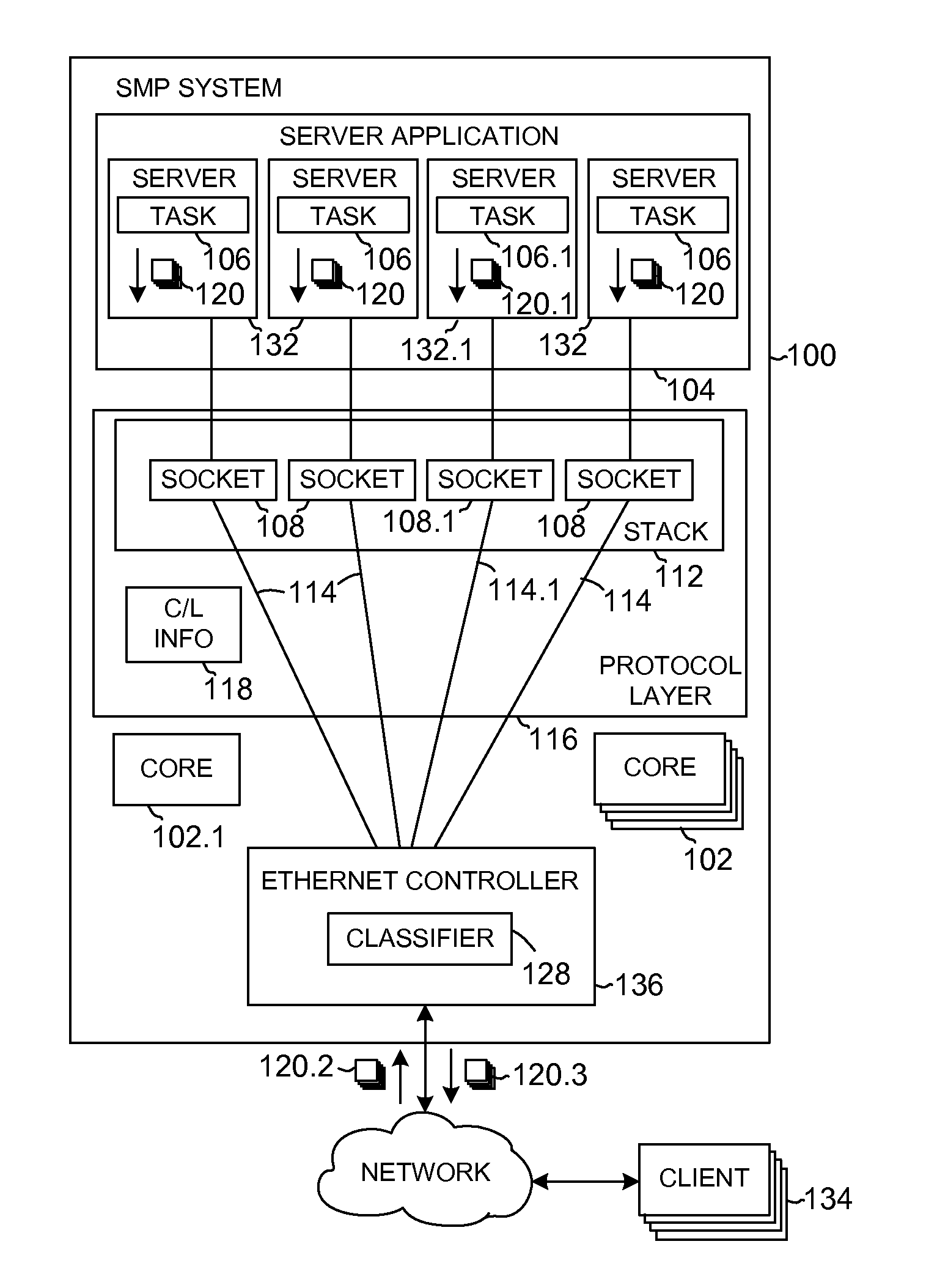Core-affine processing on symmetric multiprocessing systems
a multi-processing system and core-affine technology, applied in the direction of interprogram communication, program control, multi-programming arrangement, etc., can solve problems such as preventing legacy applications
- Summary
- Abstract
- Description
- Claims
- Application Information
AI Technical Summary
Benefits of technology
Problems solved by technology
Method used
Image
Examples
Embodiment Construction
[0010]Transmission Control Protocol (TCP) processing on Symmetric Multiple Processing (SMP) systems exhibits a performance constraint, a failure to provide full affinity of a TCP connection to a core when desired, even when ingress packet distribution is configured to create core affinities. A packet arriving on one core may be processed by an application running on another core, essentially destroying affinity. The behavior arises from the semantics of symmetric processing, which retains functionality independent of the number of cores, or on which cores an application runs. An end result of the behavior can be non-optimal performance since sharing resources between cores can result in the use of locks and non-optimal use of caches.
[0011]Approaches for binding traffic flows to specific cores of a multi-core system can enable performance improvement. Specific methods to accomplish such affinity vary, depending on the nature of the hardware, the type of software environment, the type...
PUM
 Login to View More
Login to View More Abstract
Description
Claims
Application Information
 Login to View More
Login to View More - R&D
- Intellectual Property
- Life Sciences
- Materials
- Tech Scout
- Unparalleled Data Quality
- Higher Quality Content
- 60% Fewer Hallucinations
Browse by: Latest US Patents, China's latest patents, Technical Efficacy Thesaurus, Application Domain, Technology Topic, Popular Technical Reports.
© 2025 PatSnap. All rights reserved.Legal|Privacy policy|Modern Slavery Act Transparency Statement|Sitemap|About US| Contact US: help@patsnap.com



